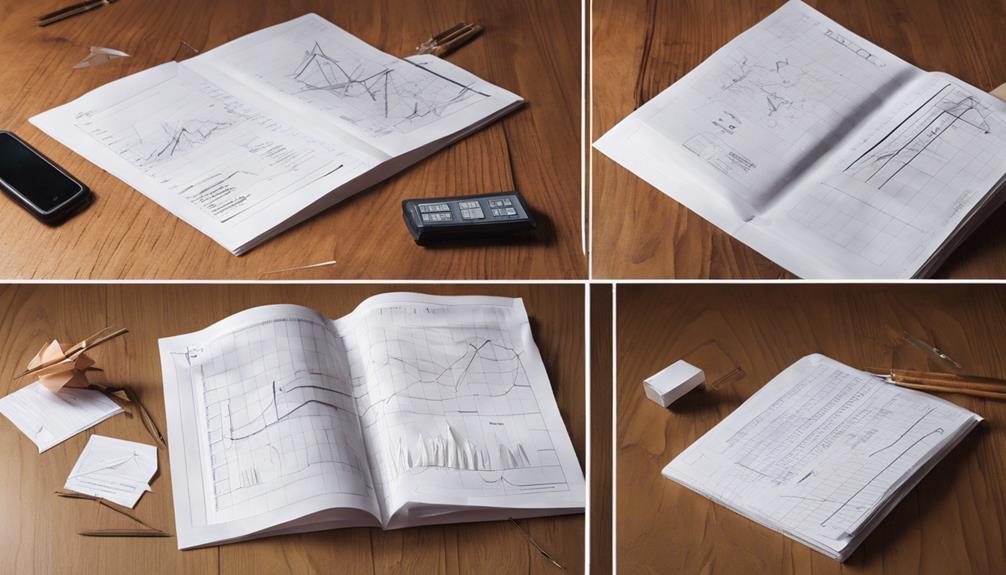Automating PPM due diligence with intelligent document processing helps you streamline your review process, saving time and reducing manual effort. It uses advanced technologies like natural language processing and machine learning to automatically analyze legal, financial, and operational documents, ensuring consistency and accuracy. This approach helps you identify red flags early, maintain compliance, and handle more investment opportunities efficiently. To discover how these tools can transform your due diligence, keep exploring further.
Key Takeaways
- Automates document review to streamline analyzing legal, financial, and operational data efficiently.
- Uses NLP and machine learning to identify risks, flag issues, and ensure consistency across evaluations.
- Accelerates deal assessment by extracting relevant data points and reducing manual effort and review time.
- Ensures uniform compliance and quality through standardized algorithms and maintains an audit trail.
- Supports scalability and real-time decision-making with continuous learning and proactive risk management.

Automating PPM (Private Placement Memorandum) due diligence transforms a traditionally manual process into a streamlined, efficient task. When you leverage intelligent document processing (IDP), you eliminate the tedious effort of reviewing countless pages of legal, financial, and operational documents. Instead, you can quickly sift through deal flow data, identify key information, and make informed decisions faster. This automation accelerates your ability to evaluate multiple investment opportunities, enabling you to handle a higher volume of deals without sacrificing accuracy or thoroughness.
One of the key advantages of automating PPM due diligence is the improvement in risk assessment. Manual review often leaves gaps or introduces human error, especially when dealing with complex documents. With IDP, you can extract relevant data points—such as financial metrics, legal disclosures, and compliance details—automatically and consistently. This ensures that every deal undergoes the same rigorous analysis, reducing oversight and giving you a clearer picture of potential risks. As a result, you’re better equipped to identify red flags early and assess the true risk profile of each opportunity.
Intelligent document processing tools use techniques like natural language processing (NLP) and machine learning to understand the context within documents, not just keywords. This means you don’t need to manually highlight or search for specific terms; the system does it for you, saving valuable time. You can set criteria to flag unusual clauses, discrepancies, or missing information, enabling a proactive approach to due diligence. This technology also allows for real-time updates and continuous learning, meaning your review process becomes more accurate over time.
Moreover, automating the review of deal flow enhances consistency across your diligence process. Different team members might interpret documents differently or overlook important details. With IDP, the same set of rules and algorithms apply consistently, ensuring uniformity in your evaluations. This consistency not only improves the quality of your assessments but also provides a clear audit trail, which is crucial for compliance and reporting. Additionally, integrating structured data extraction helps ensure comprehensive analysis of complex documents.
Frequently Asked Questions
How Does IDP Improve Accuracy in PPM Due Diligence?
IDP improves accuracy in PPM due diligence by automatically extracting and validating data, reducing manual errors. You’ll notice fewer mistakes because the system consistently interprets documents with high precision, ensuring data accuracy. Error reduction happens as IDP minimizes human involvement, which often introduces inaccuracies. This streamlined process helps you make more reliable decisions faster, with confidence that your data is precise and trustworthy.
What Are the Main Challenges of Implementing IDP?
You face challenges like data privacy concerns and implementation hurdles when integrating IDP. Protecting sensitive information requires strict security measures, which can complicate deployment. Additionally, you might struggle with adapting existing systems and workflows to fit IDP technology, leading to delays or increased costs. Overcoming these obstacles demands careful planning, robust security protocols, and ongoing training to guarantee smooth, compliant implementation of intelligent document processing.
Can IDP Integrate With Existing PPM Software Systems?
Yes, IDP can integrate with your existing PPM software systems. You’ll find that many IDP solutions are designed for seamless software integration, guaranteeing system compatibility. By connecting IDP with your current tools, you streamline due diligence processes and reduce manual effort. Just confirm that the IDP solution supports your specific software’s APIs and data formats to facilitate smooth integration and peak performance.
What Are the Costs Associated With Deploying IDP Solutions?
Have you considered the true costs of deploying an IDP solution? You’ll need a thorough cost analysis covering licensing, implementation, and ongoing maintenance. While initial expenses might seem high, the ROI evaluation often reveals significant savings in processing time and error reduction. Remember, investing in IDP can streamline your due diligence, but understanding the full costs upfront guarantees smarter decision-making and long-term value for your PPM processes.
How Secure Is Sensitive Data Processed by IDP Technology?
Your sensitive data processed by IDP technology remains secure through data encryption, which safeguards information both at rest and in transit. Access controls ensure only authorized personnel can view or modify the data. Additionally, advanced security measures like multi-factor authentication and regular audits further safeguard your information, making IDP solutions a reliable choice for handling confidential data securely.
Conclusion
By automating PPM due diligence with intelligent document processing, you’re opening a new era of efficiency and accuracy. Imagine a world where tedious manual checks become a thing of the past—like turning the page to a smarter, faster chapter in your investment journey. Embrace this technology now, and watch how it transforms your workflow from chaos to clarity, making every decision sharper and more confident. After all, isn’t the future worth automating for?









